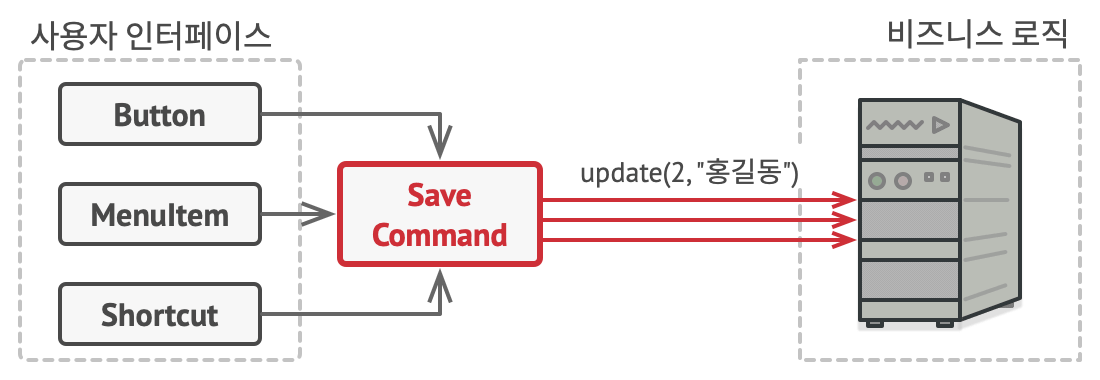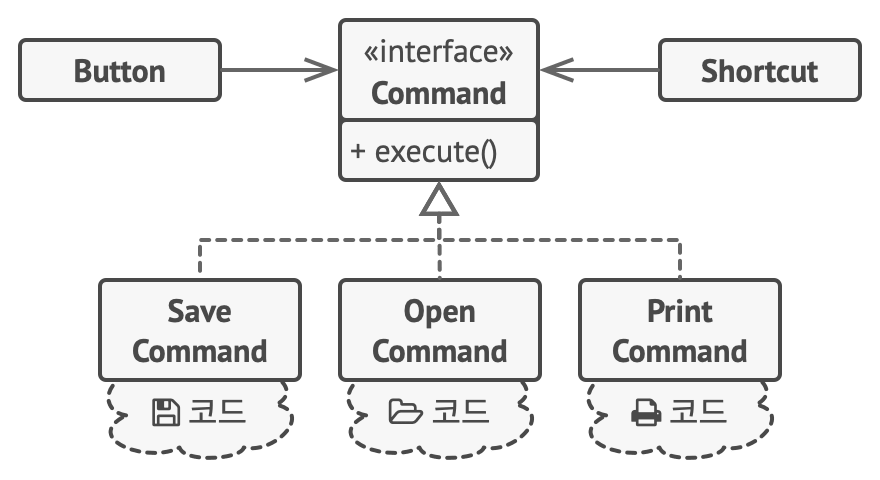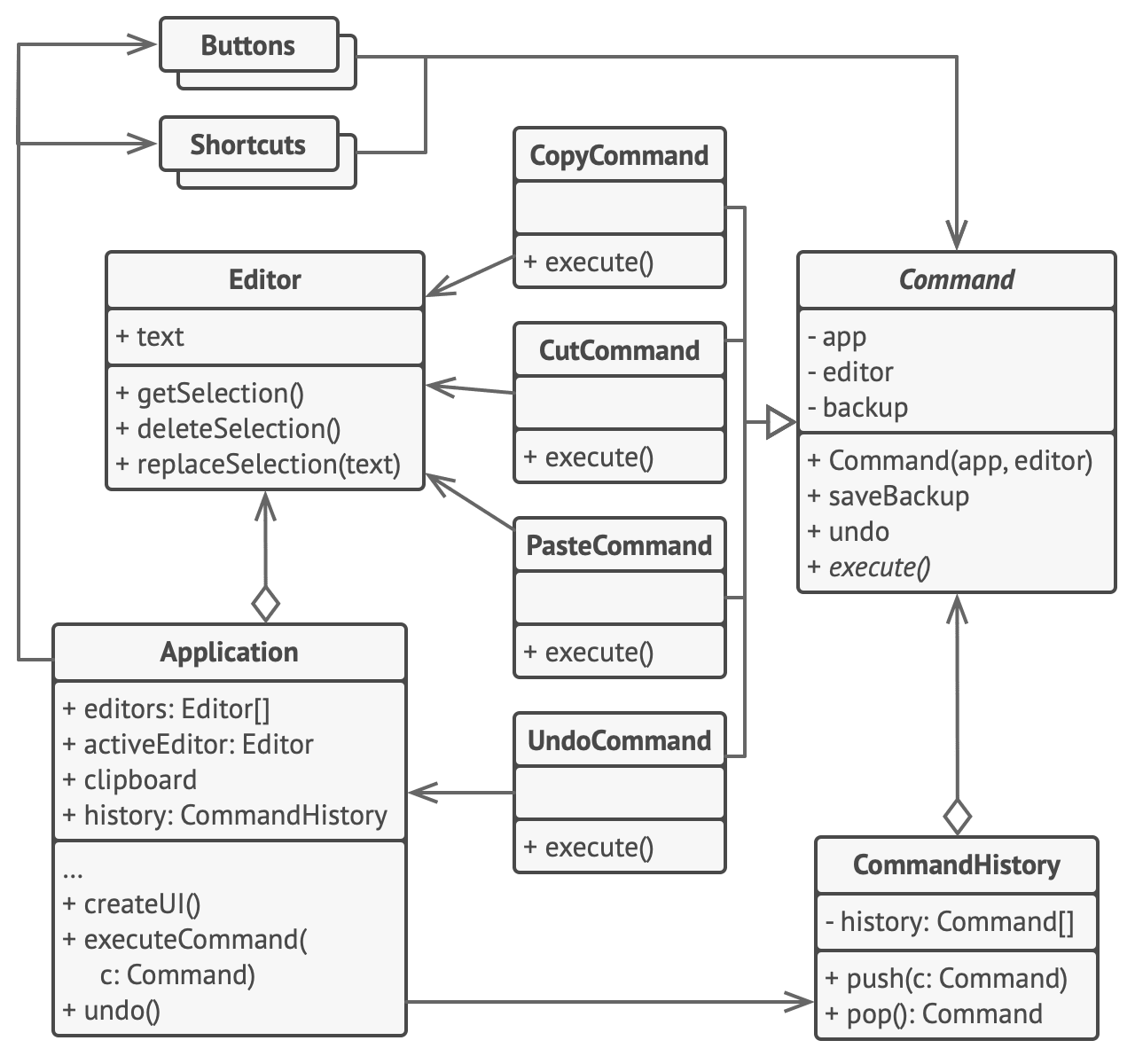디자인 패턴 - 행동 패턴(커멘더)
커맨드(command) 패턴
하나의 명령을 책임으로 하는 객체를 통해 다수의 객체에 요청을 처리하도록 하는 패턴입니다. 이렇게 하면 요청을 캡슐화 하고 의존성을 느슨하게 만들 수 있습니다.
실제 적용 예시
- 만약 버튼클래스를 만들고 그에 파생 버튼이 여러개가 생성되었다면 상위의 버튼 클래스를 수정하면 모든 버튼클래스에 영향을 끼치게 됩니다.
- 레스토랑에서는 모든 주문을 웨이터가 작성한 주문서로 하게 되고 그주문서에 따라 주방에서 다양한 요리를 할 수 있습니다.



export class Command {
public execute(): void {
throw new Error("Abstract method!");
}
}
export class ConcreteCommand1 extends Command {
private receiver: Receiver;
constructor(receiver: Receiver) {
super();
this.receiver = receiver;
}
public execute(): void {
console.log("`execute` method of ConcreteCommand1 is being called!");
this.receiver.action();
}
}
export class ConcreteCommand2 extends Command {
private receiver: Receiver;
constructor(receiver: Receiver) {
super();
this.receiver = receiver;
}
public execute(): void {
console.log("`execute` method of ConcreteCommand2 is being called!");
this.receiver.action();
}
}
export class Invoker {
private commands: Command[];
constructor() {
this.commands = [];
}
public storeAndExecute(cmd: Command) {
this.commands.push(cmd);
cmd.execute();
}
}
export class Receiver {
public action(): void {
console.log("action is being called!");
}
}
언제 사용할까 ?
실행 취소 다시 실행등을 구현하는 케이스에서 가장 많이 사용되어 집니다.그리고 다양한 파생 자식클래스에서 다양한 기능을 추상화 해서 따로 관리할때 좋습니다.
장점
- 커맨드의 조합으로 복잡한 기능을 단순화 할수 있다
- 객체의 기능을 따로 관리해서 복잡성을 줄인다.
단점
- 발송자와 수싲나의 관리를 위한 레이어 도립으로 복잡함이 늘어날수 있다.